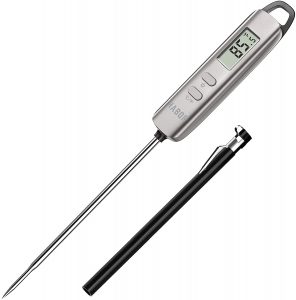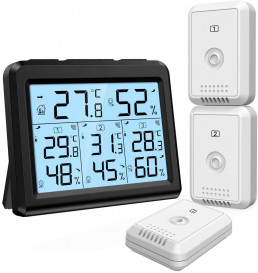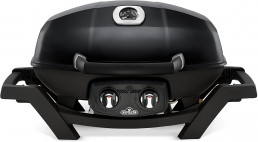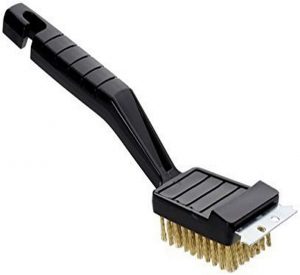Temperature Monitoring - Vital for Your RV
We knew that moving from a house to an RV would require some changes - one of the biggest is being more diligent about your environment. Moving constantly and living in essentially a big black box guarantees that we will have wide swings in temperature throughout the year! Most of your things don't really care about these swings, but a few things do:
Pets
- Musical Instruments
- The Refrigerator
- Lithium Batteries
We have everything except pets, and wanted to be able to keep an eye on the coach as well as the basement (where the lithium batteries live). We wanted at least 3 sensors, and a display that we could set on the counter. In the end we looked at three different units:
AcuRite 02082M Home Temperature & Humidity Station
The AcuRite 02082M Home Temperature & Humidity Station is a really nice looking unit - full color, comes with 3 sensors and cost around $50 at the time of this writing.
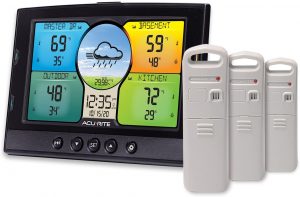
Ambient Weather WS-3000-X5
The Ambient Weather WS-3000-X5 is a powerhouse - comes with 3 sensors (around $85), or 5 sensors (around $100) and does temperature logging via an optional micro-SD card. The main unit can handle up to 8 sensors.
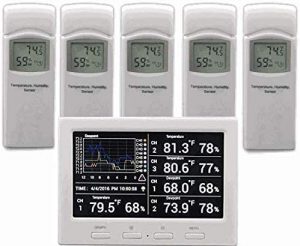
Keekit Outdoor Thermometer
The Keekit outdoor thermometer is pretty basic, lacking any sort of alarms. But it did have one advantage - when we bought it the unit only cost $31 with 3 sensors. It currently sits on our kitchen counter and monitors the freezer, the refrigerator, and the basement compartment where our batteries live. Although it isn't as fancy as the others, the price was right and so far has met our needs!
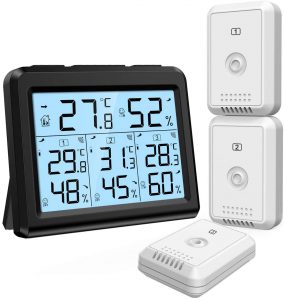
Grilling on the Road? Heck Yeah!
One thing we loved to do in our sticks and bricks was grilling - at least once a week we would fire up the Weber and make chicken and/or steak. Since we try to eat healthy and aren't exactly world-class chefs, we tend to cook a lot of chicken and use it for our dinners throughout the week. As you can see, we were used to a BIG grill for this task:
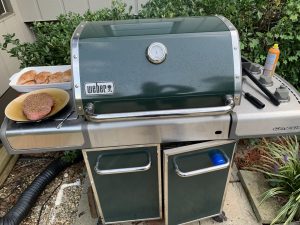
The Weber Genesis is a beast of a grill. Ours lasted 15 years - we replaced the flavor bars twice and maybe cleaned it a handful of times (probably should have been more). The only complaint was the rusting of the lower parts behind those doors. Because of that, we had to sell it for parts for $40 instead of getting at least $200 on Craigslist (these are $1,000 grills!).
Being in a large 45 ft coach gives us some flexibility in the size of grill we can take - while we looked at smaller options, we really wanted to be able to cook at least 6-8 chicken breasts if possible. Either for meal prep or if we have a party and want to get a lot of meat done was a priority!
We did have our sights set on another Weber - our last stood the test of time, and that is rare in the world of junk grills that fall apart. We narrowed our choices down to two contenders:
Weber Q2200 Portable Grill

The Weber Q2200 definitely fit the bill. It has 280 square inches of cooking space and 12K BTU of cooking power. We also liked the side shelves, especially if we didn't have a great location to put the grill at our campsite. We would expect to get good service from this grill. Unfortunately the grill had a couple downsides for us:
- It is set up for using small canisters, and we prefer to use a standard LP tank (far cheaper! You have to buy a LP tank adapter to use the bigger tank, at additional cost.
- There is only one larger burner on this grill - if you want to control the temperature of each side you are out of luck. We do this on a regular basis - running one side at the highest setting for the steak and the other side around 350 for the chicken. We loved the ability to do this with our Genesis. At the end of the day, this swayed us to getting one of these:
Napoleon TravelQ Pro 285 Gas Grill
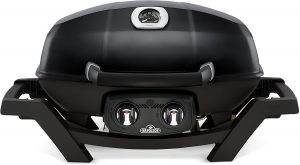
After doing a lot of research, we found a worthy competitor to Weber - the Napoleon TravelQ Pro 285. Similar in size and capability as the Weber, with one critical difference - two burners and more control over the temperature. Although made in China (as is most of Weber now), they clearly use higher quality components than a lot of the other manufacturers. Another bonus - the Napoleon Pro 285 is already set up for a big LP tank right out of the box, so no extra hose to buy. Of course, we will have to buy a different adapter if we do choose to use small tanks (if we took it tent camping for example). The only bummer so far is the lack of side tables - Not sure if that will matter, as they are pretty small (at least compared to the Genesis we were used to).
How Do we Clean It?
One thing we noticed, once we read the directions for the Napoleon (that's a first!) was a need for a brass grill cleaning brush. We believe that is because of the ceramic coating. If you go to the average Walmart, every brush is pretty much stainless steel. So we found a good option on Amazon in the Rubbermaid brass grill brush.
What Other Accessories Can We Not Do Without?
For us, grilling would be impossible without a decent thermometer. We have been through a few, and have settled on this one from Amazon - the Habor 022 meat thermometer. It finds the temp quickly, the reading stays stable, and it seems pretty accurate.
